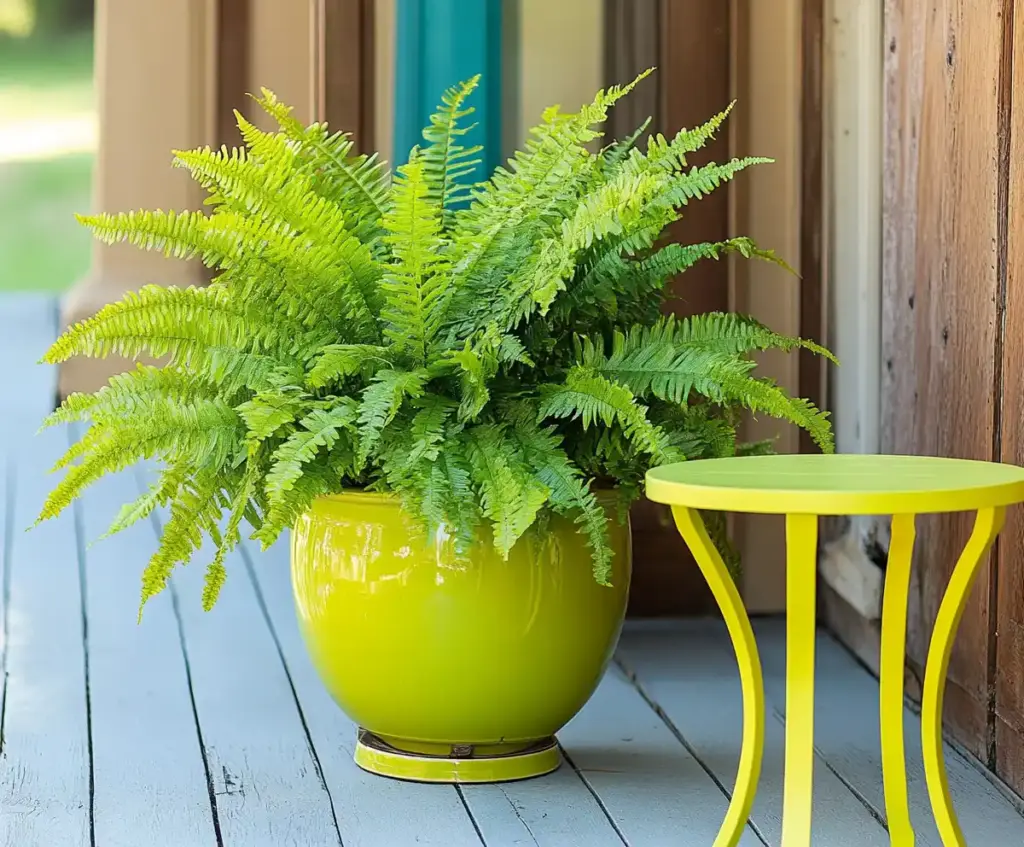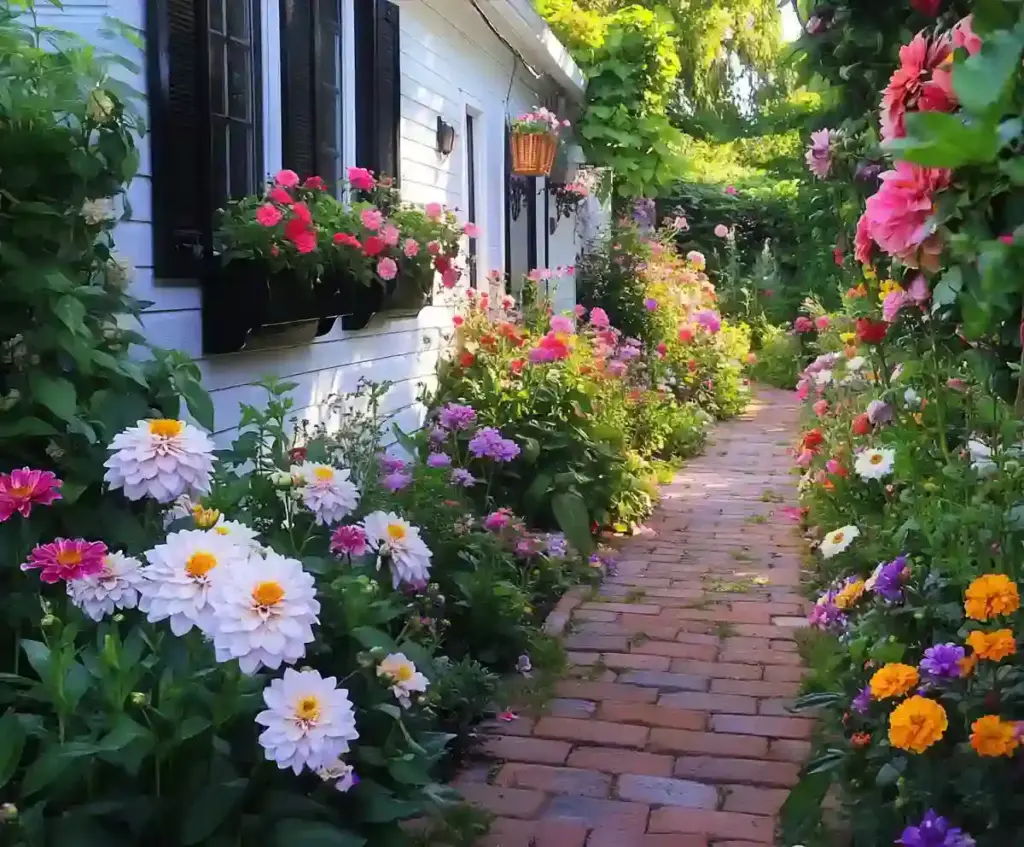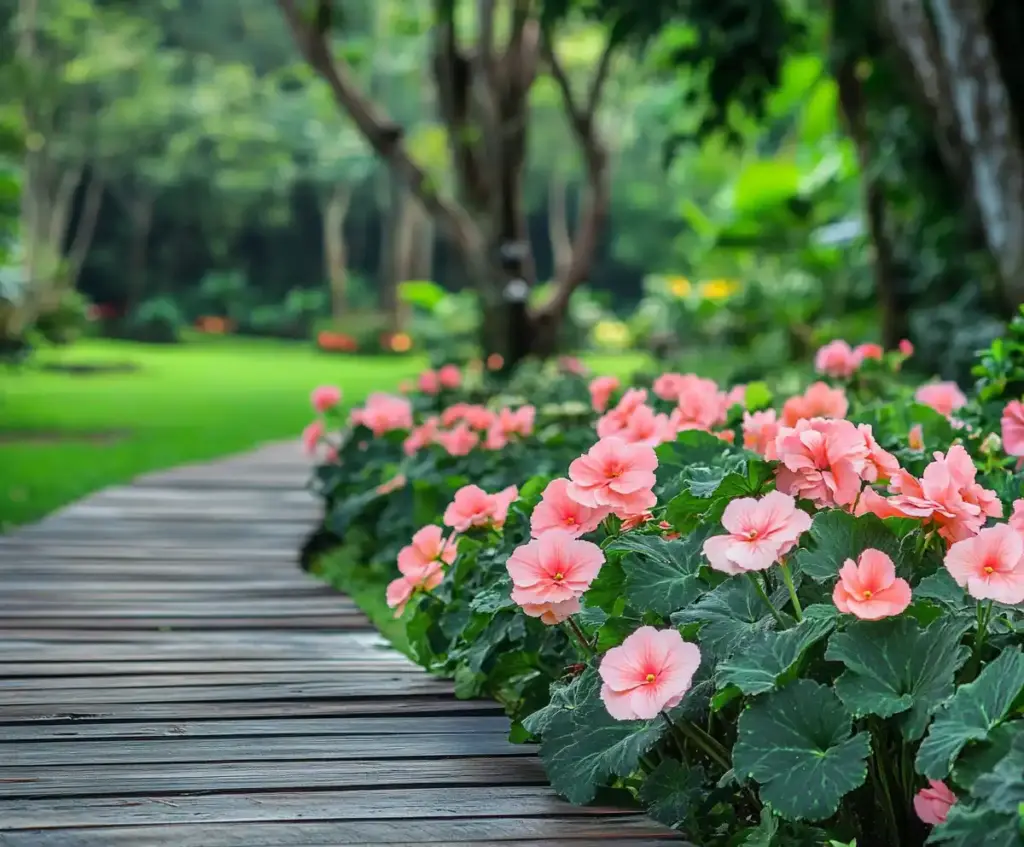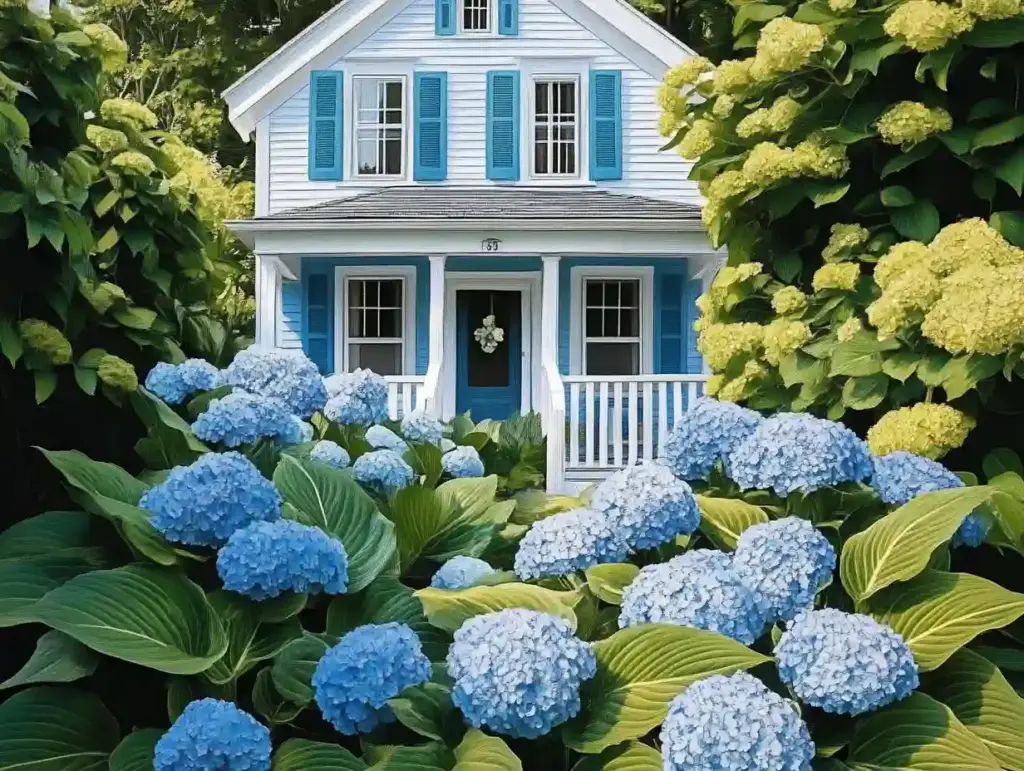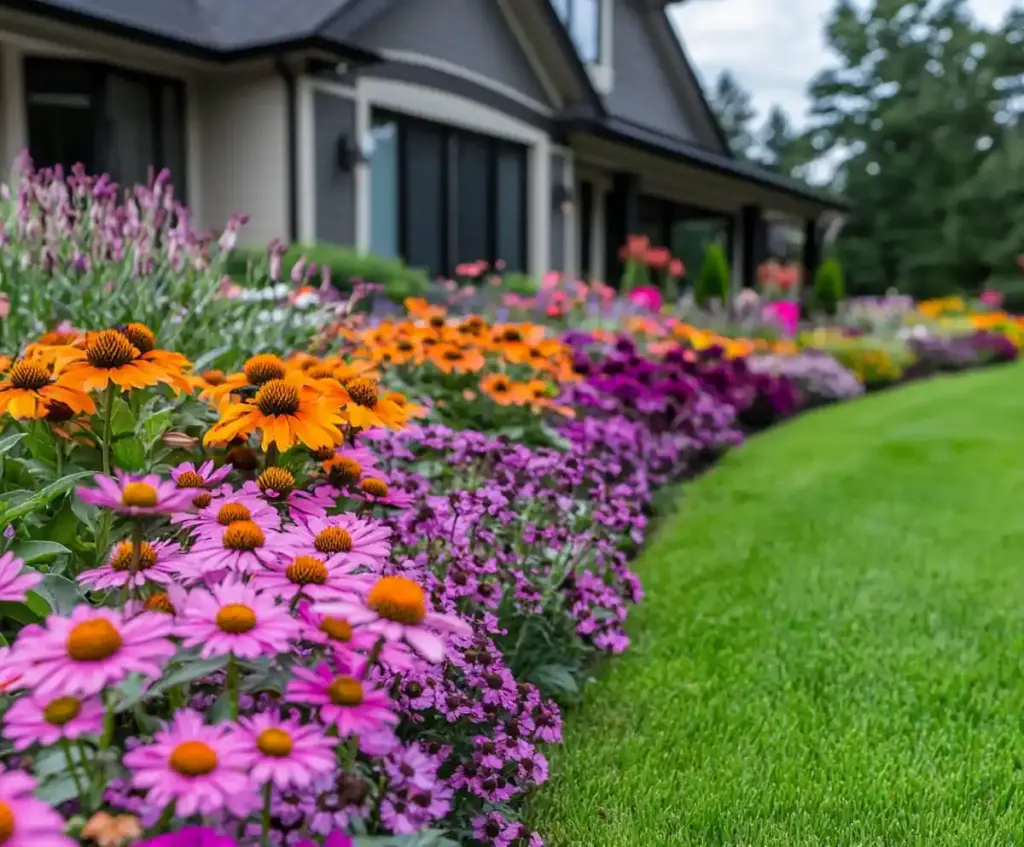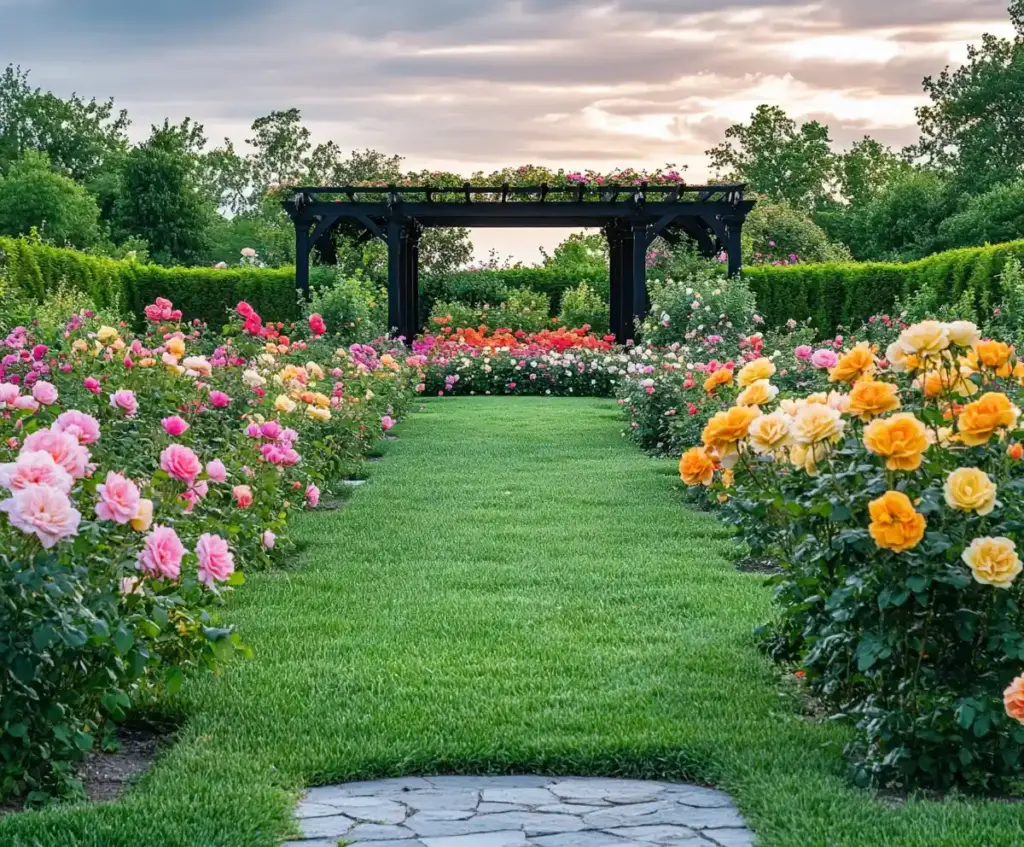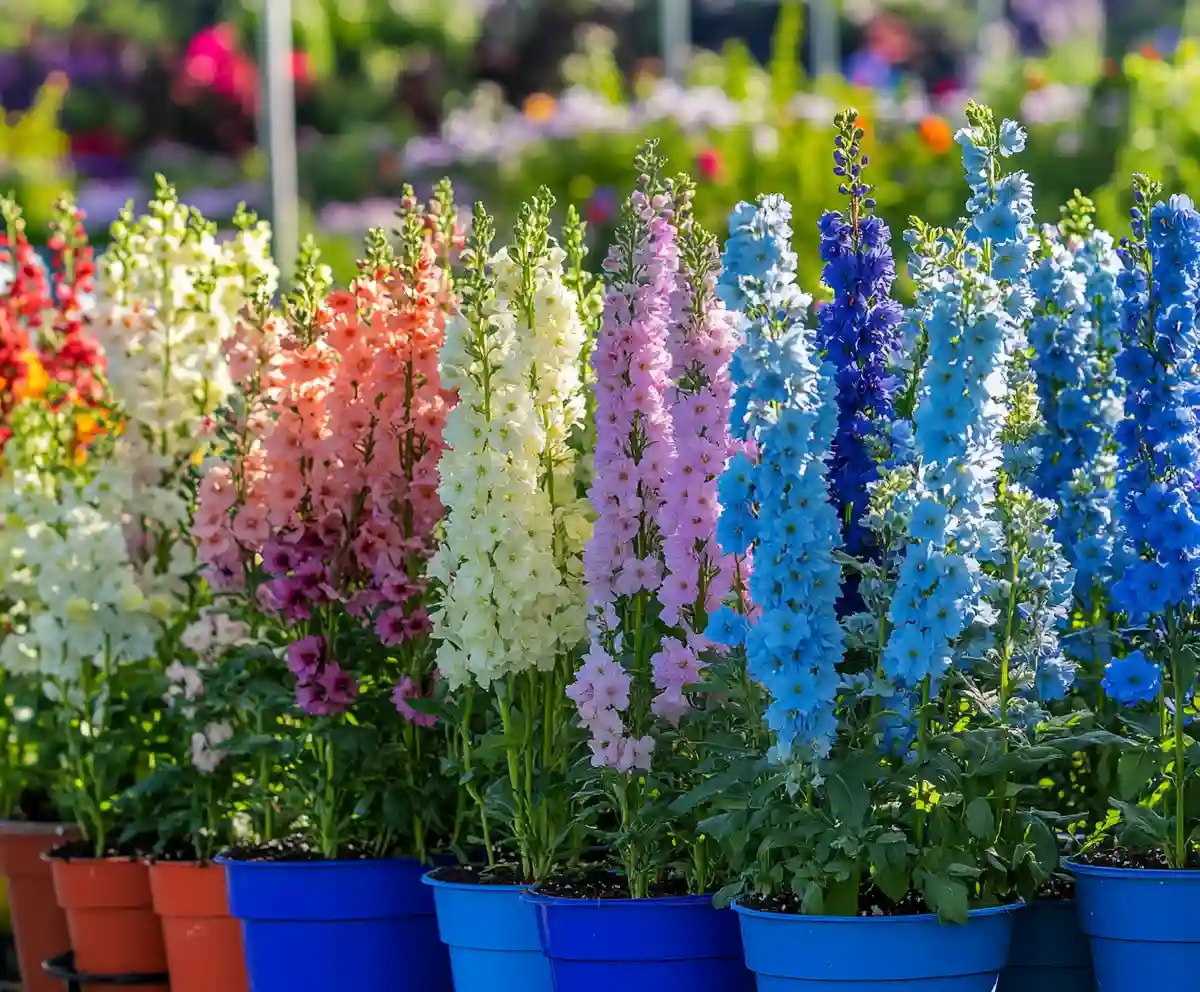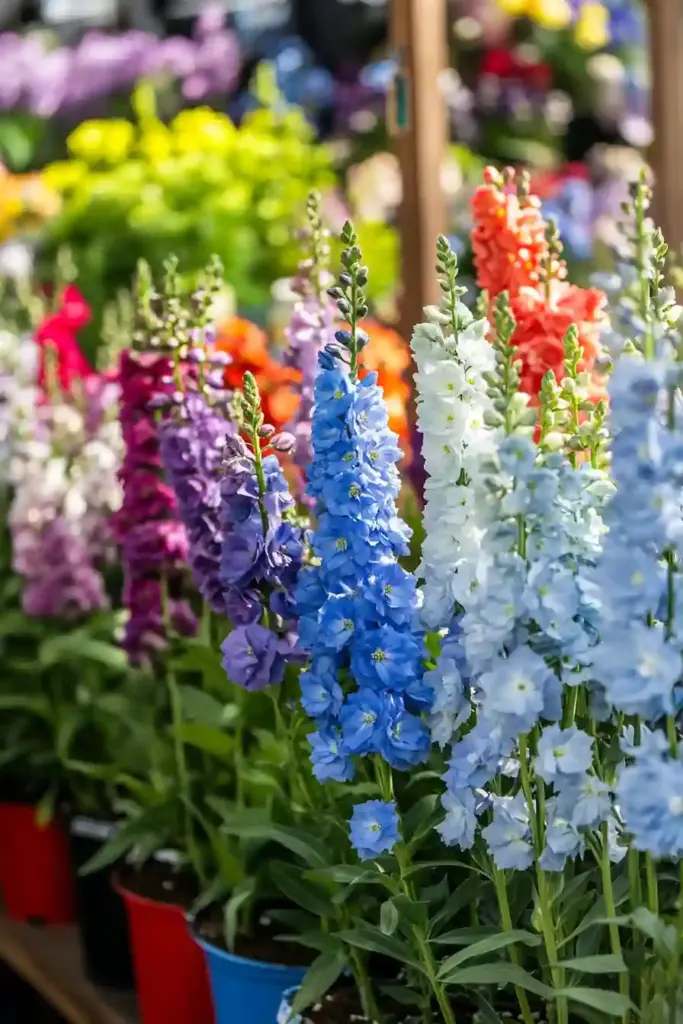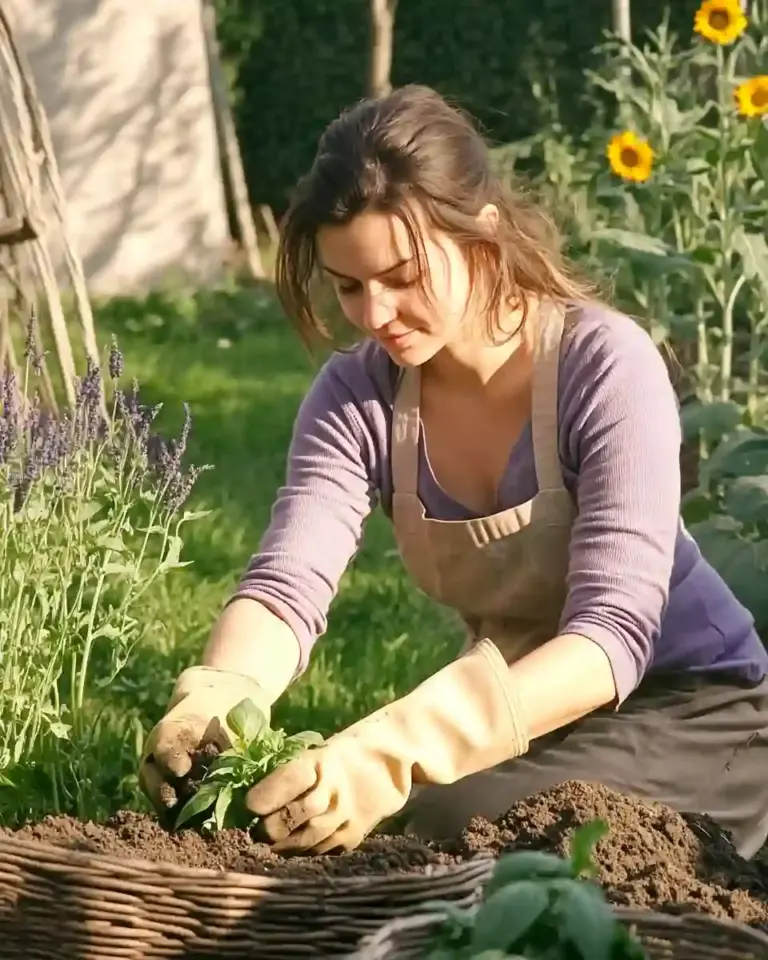Delphiniums are the showstoppers of any summer garden, sending up tall spires of vivid color that bring drama and elegance to borders. With their dazzling shades of blue, pink, white, and mauve, these classic cottage garden favorites are more than just eye candy—they’re magnets for pollinators and make stunning cut flowers, too. Whether you’re new to gardening or just looking to add a bold vertical accent, learning how to grow delphiniums can open the door to vibrant summer displays that return year after year.
Native to the Northern Hemisphere and part of the buttercup family, delphiniums have been cherished for centuries. Their name comes from the Greek word delphinos—meaning dolphin—thanks to the unique shape of their flower buds. You might also hear them called larkspur, a nod to their Tudor-era nickname. From tall, stately Elatum hybrids to the more compact Magic Fountain series, there’s a delphinium variety for every space.
If you’re looking to further elevate your garden’s aesthetic, consider exploring Create an English Garden with These 14 Classic Flowers. This companion guide provides creative ideas for integrating delphiniums with a mix of timeless blooms, helping you design an enchanting outdoor retreat that blends traditional elegance with a touch of modern vibrancy.
Table of Contents
🌞 Where to Grow Delphiniums
To get the most from your delphiniums, location is everything. These plants thrive in moist but well-drained soil and full sun—think of a spot that gets at least six hours of sunlight daily. Delphiniums don’t just want sunshine; they demand it to produce those towering flower spikes.
Because they can reach heights of over 6 feet, delphiniums are best planted at the back of borders, where they create a bold backdrop for lower-growing perennials. Avoid overly exposed spots where wind can batter their tall stems. If your garden is breezy, a sheltered nook or a position near a wall or fence will offer them some welcome protection.
If your soil is on the heavier side (like clay), improve drainage by mixing in grit or compost before planting. Delphiniums dislike sitting in soggy soil, especially in winter—it can cause root rot or weaken the plant before spring.
Quick Placement Tips:
- Sunlight: Full sun (at least 6 hours/day)
- Soil: Rich, well-drained, slightly moist
- Placement: Back of sunny borders
- Avoid: Windy and waterlogged areas
🌿 How to Plant Delphiniums

You can plant delphiniums at almost any time of year, but spring and autumn are ideal. During these seasons, the soil is warm and naturally moist, helping new roots establish quickly without the stress of summer heat or winter chill.
Step-by-Step Guide to Planting Delphiniums:
- Choose Your Spot Wisely:
Find a sunny, sheltered location with rich, well-draining soil. - Prep the Planting Hole:
Dig a hole twice the width of the rootball and just as deep. Add well-rotted compost or manure at the base to enrich the soil. - Improve Drainage (if needed):
If you’re working with heavy soil, mix in some grit or horticultural sand to the planting hole to prevent waterlogging—especially important during winter. - Plant at the Same Depth:
Place the delphinium so it’s sitting at the same level it was in its pot. Backfill gently with soil, pressing it down to remove air pockets. - Water In Thoroughly:
Give the plant a good soak to help settle the soil around the roots. - Mulch for Moisture & Protection:
After planting, apply a layer of leaf mould or garden compost to help retain moisture and suppress weeds.
🪴 Pro Tip: If you’re planting several delphiniums, leave at least 60–75 cm (2–2.5 ft) between them to allow for airflow and prevent disease.
🌸 Caring for Delphiniums

Delphiniums are a bit high-maintenance—but in return, they reward you with jaw-dropping blooms. From feeding to staking, here’s everything you need to know to help them thrive.
🌱 Feeding Your Delphiniums
These are hungry plants, so regular feeding is key to strong stems and vibrant flowers. As soon as new growth appears in spring:
- Feed every two weeks with a high-potash liquid fertilizer (like tomato feed)
- Continue feeding through the blooming season for the best results
💧 Watering Tips
Keep the soil consistently moist, especially during dry spells. Delphiniums prefer cool, moist conditions, but hate waterlogged roots—so aim for a balance.
- Water deeply once or twice a week in summer
- Mulch annually to lock in moisture and regulate soil temperature
🪴 Staking and Support
Because they grow tall, staking is non-negotiable. Start early—before they flop!
- Use bamboo canes or a grow-through plant support ring
- Tie stems loosely with garden twine, adjusting as they grow
✂️ Deadheading & Second Bloom
After the first flowering in early summer:
- Cut spent flower spikes down to the base
- Leave any small side shoots intact
- Water and feed again
With luck, you’ll get a second flush of blooms in late August or September!
🍂 Autumn & Winter Care
- Cut plants back to the ground in late autumn once foliage dies back
- Mulch around the crown with leaf mould or compost to protect roots during winter
🛠 Pro Tip: Every few years, divide mature clumps in spring to rejuvenate growth and maintain flower quality.
🌱 How to Propagate Delphiniums
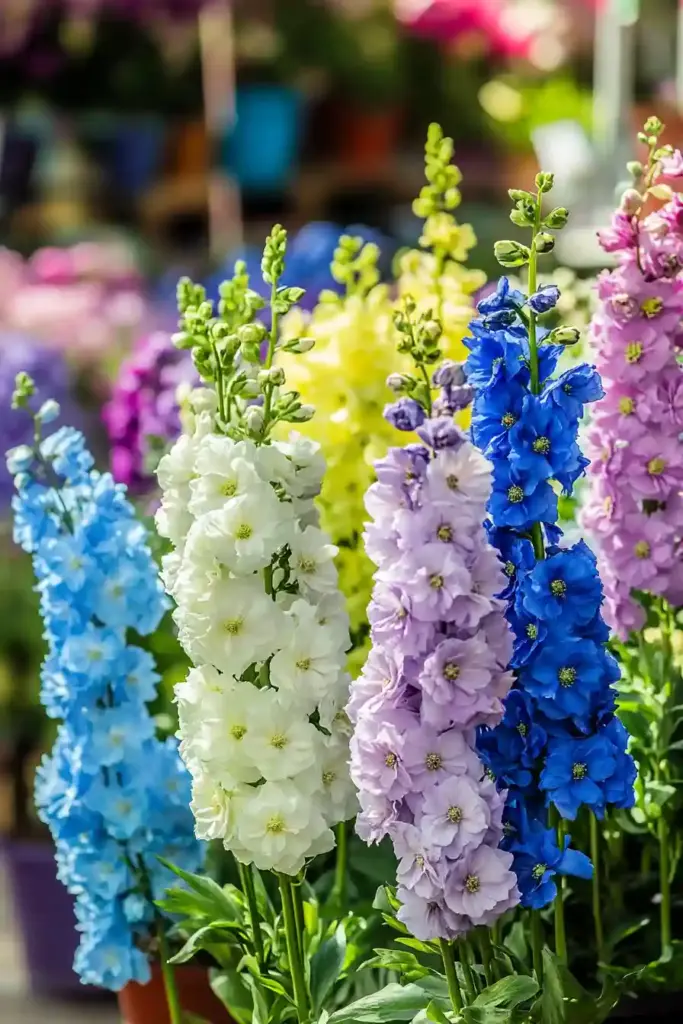
There are two popular methods for propagating delphiniums: growing from seed and taking basal cuttings. Each has its pros, but basal cuttings give you an exact clone of the parent plant and tend to produce stronger results.
🌾 Growing Delphiniums from Seed
Sowing seeds is a cost-effective way to build your collection, especially if you’re up for a bit of a challenge.
- When to sow: Late winter to early summer (February–June), or in early autumn (September–October)
- How to sow: Use seed trays or small pots filled with moist seed compost. Keep in a bright spot at around 50–60°F (10–15°C).
- Tip: Fresh seed germinates better—use seeds from a reputable supplier or collect your own from faded flower spikes.
✂️ Taking Basal Cuttings (Highly Recommended)
Basal cuttings give you identical young plants and are often more reliable than seed.
Here’s how to do it:
- Wait for new shoots in spring: Look for strong, healthy shoots at the base of an established plant.
- Take the cutting: With a clean knife, slice a shoot just below soil level. Only take 1–2 from each plant to avoid stressing it.
- Prep the cutting:
- Remove excess leaves, leaving just a few at the top
- Place the cutting in a polythene bag to keep it moist while you work
- Pot it up: Insert the cutting into a small pot filled with a mix of multipurpose compost and perlite for drainage.
- Keep it humid: Cover with a clear plastic bag or use a propagator. Mist daily or keep in a warm, bright space out of direct sun.
- Rooting time: In a few weeks, roots should develop. Once established, you can pot on or plant out in your borders.
🌿 Pro Tip: Basal cuttings taken in early spring tend to root faster and grow into sturdier plants by summer.
🐌 Common Problems and How to Solve Them
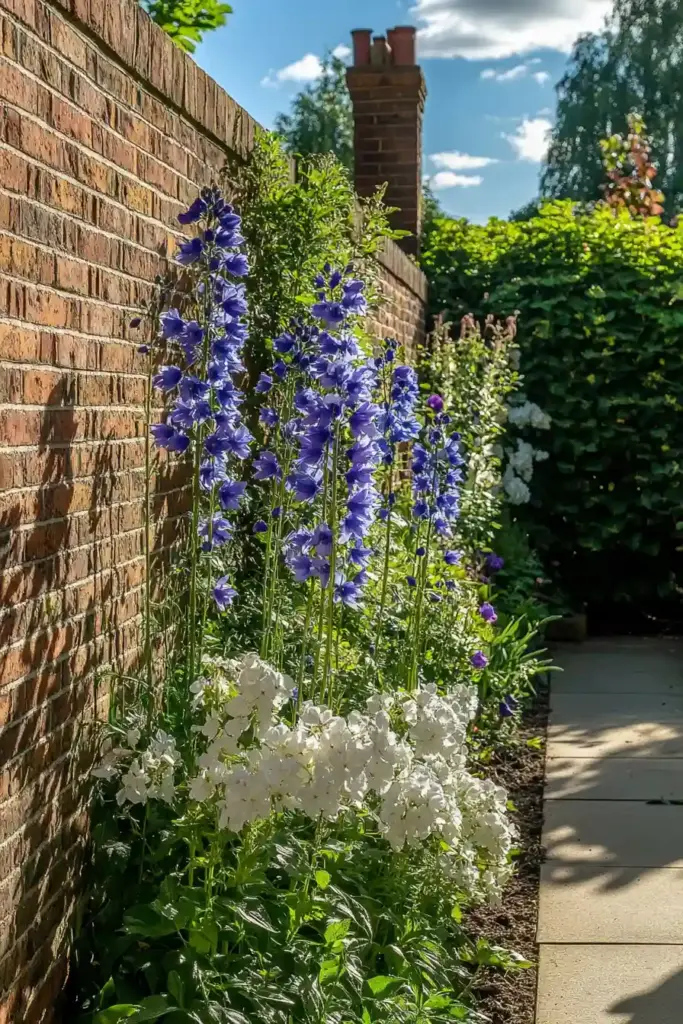
Delphiniums may be showstoppers in the garden, but they can also be a magnet for pests and diseases. Here’s what to look out for—and how to stop trouble in its tracks.
🐌 Slugs and Snails
Biggest threat: As soon as new shoots emerge in spring, slugs and snails will be on the attack.
How to protect your plants:
- Apply organic slug pellets or use a garlic spray (1 crushed bulb to 1 litre of water)
- Set out beer traps or scatter crushed eggshells around the base
- Try biological controls like nematodes (effective only in moist soil)
🌫️ Powdery Mildew
This white, powdery coating appears in dry weather, especially if plants are stressed.
Prevention and cure:
- Keep plants well-watered, especially in heatwaves
- Ensure good airflow by spacing plants properly
- Use a fungicide if needed, preferably organic
🍂 Rust
Rust causes orange or brown pustules on the leaves.
Combat this by:
- Removing and binning affected leaves (don’t compost!)
- Cleaning up fallen foliage in autumn
- Applying a sulphur-based spray as a preventive measure
🦠 Black Blotch (Bacterial Infection)
This disease causes large, dark blotches on leaves and can spread quickly in wet conditions.
Important: There is no cure. The best solution is to:
- Remove the entire affected plant
- Disinfect any tools used
- Avoid replanting delphiniums in the same spot for a season or two
🛒 Buying Advice: Choosing the Right Delphiniums
Before you hit the garden center or browse online retailers, it’s worth considering a few key factors to make sure you’re picking the right delphiniums for your needs. From size to bloom type, here’s what to keep in mind:
📏 Know Your Space
Delphiniums can range from dwarf varieties under 1 metre to towering giants over 2.5 metres tall.
- For small gardens or pots, look for compact series like ‘Magic Fountain’
- For large borders, go bold with tall types like ‘Elatum’ hybrids
🌞 Match to Your Conditions
Delphiniums love full sun and fertile soil—so make sure your garden offers that before investing. Avoid shady, windy, or boggy areas, as these can stress the plants and increase the risk of disease.
🌱 What to Look for When Buying
Whether shopping in person or online, keep an eye out for healthy plants:
- Foliage should be bright green and free from spots or damage
- Avoid leggy or yellowing plants, which may have been stressed
- Check for firm, moist roots—not dried out or overly soggy
💸 Best Ways to Buy
- Plug plants in spring are affordable and easy to grow on at home
- Potted plants are great for instant impact and reliable performance
- Buy from reputable nurseries or specialist online retailers for better selection and quality
🛍 Top Online Sources (UK):
- Thompson & Morgan
- Blackmore & Langdon
- Crocus
- Suttons
- Van Meuwen
- Primrose
🌈 Top Delphinium Varieties to Grow
Whether you’re going for bold drama or compact charm, there’s a delphinium variety to match every garden style. Here are some standout options to consider:
💙 Delphinium ‘Amadeus’
A rich, velvety showstopper with deep purple-blue double flowers and a dark center (or “bee”). Perfect for cutting and dramatic displays.
- Height: ~1.5m
- Spread: ~1m
- Best for: Striking mid-border impact
🌸 Delphinium ‘Magic Fountain Series’
Compact, bushy, and great for smaller gardens or containers. Offers a lovely range of colors—blue, pink, white—all with contrasting centers.
- Height: ~90cm
- Spread: ~60cm
- Best for: Small spaces or front of borders
🌼 Delphinium ‘Pacific Hybrids’
A classic group from the 1950s known for tall spikes and a variety of vibrant shades. Although short-lived, they deliver serious wow factor.
- Height: ~1.5m
- Spread: ~75cm
- Best for: Traditional cottage gardens
💫 Delphinium ‘Rising Stars Mixed’
As the name suggests, this mix offers a kaleidoscope of single and double blooms in pinks, blues, and purples. Great for informal plantings.
- Height: ~1.5m
- Spread: ~75cm
- Best for: Eye-catching, colorful borders
🩵 Delphinium elatum ‘Faust’
A towering giant with intense cobalt-blue double flowers and a black bee. It brings dramatic vertical height and elegance.
- Height: Up to 2.5m
- Spread: ~1m
- Best for: Bold background planting in large borders
🌷 Delphinium elatum ‘Cinderella’
A unique soft-pink bloom with strong, sturdy stems and triple-layered petals. Voted Best New Plant at BBC Gardeners’ World Live in 2019.
- Height: ~1.2m
- Spread: ~80cm
- Best for: Romantic or pastel-themed gardens
🌿 Conclusion
Growing delphiniums may require a bit of extra care, but their towering elegance and vivid color pay off tenfold. With the right spot, regular feeding, and a little protection from pests, these perennial beauties can light up your garden and even reward you with a second flush of blooms. Whether you choose a compact cultivar or a sky-high showpiece, delphiniums are guaranteed to steal the show every summer.
🌿 Love gardening inspiration? Follow me on Pinterest for bold plant ideas, tips, and seasonal color!
More Posts
